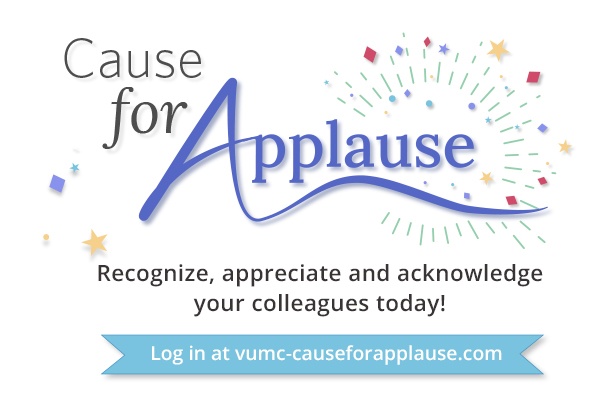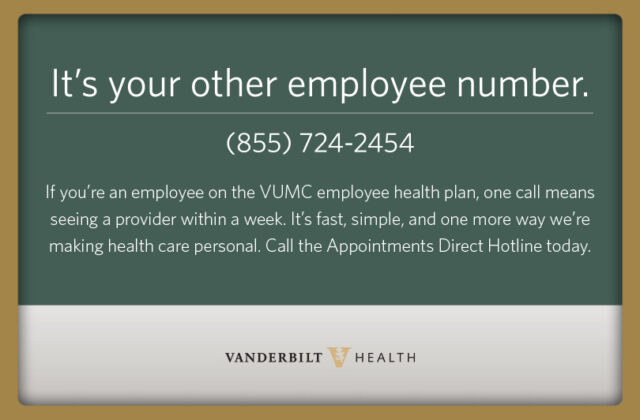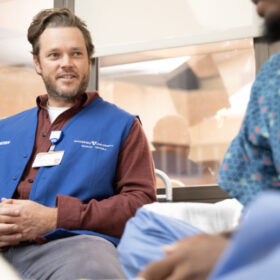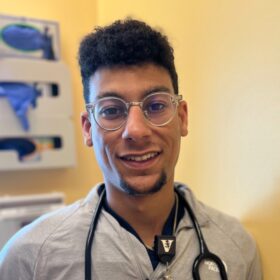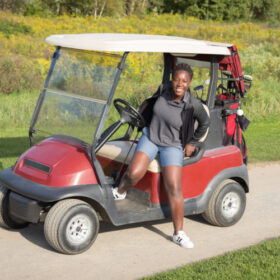A wreck on the highway with a bleeding man, a pregnant woman and a small child. VUMC’s Chris Hare stopped to help.
A routine afternoon commute changed in an instant
September 24, 2019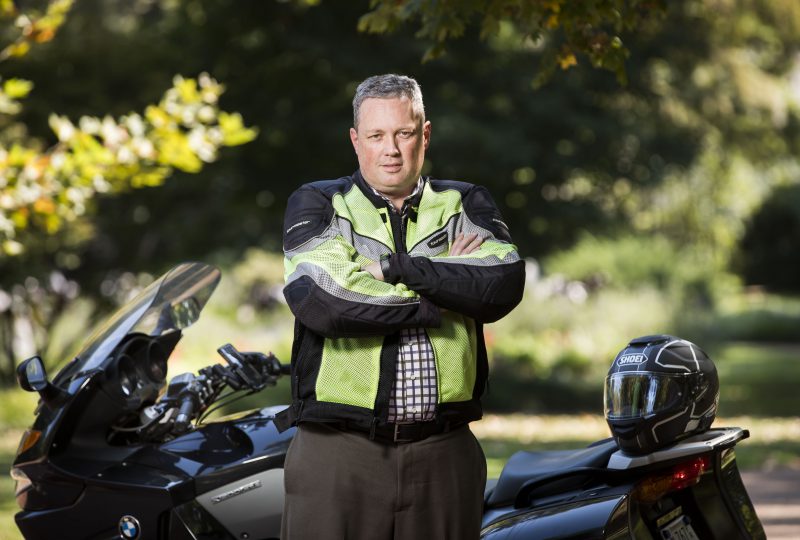
Chris Hare with the motorcycle he was riding the day he came upon the wreck on the highway. Photo by Susan Urmy
On his commute home one recent afternoon, Chris Hare, a Vanderbilt University Medical Center Information Technology manager, put the gray lanyard holding his VUMC ID badge to good use.
Between 4 and 5 p.m., on Thursday, Aug. 29, Hare was driving his motorcycle home to Spring Hill from VUMC in the left lane on I-65 South, when he saw the air conditioning service van ahead of him suddenly brake and slam into a concrete wall on the left shoulder of the interstate.
The accident, on I-65 South between Highway 96 and Peytonsville Road, occurred when the service van rear-ended a Honda Odyssey minivan, apparently when the driver of the service van was trying to change lanes and the woman driving the minivan had to stop suddenly in front of him.
“My first thought was ‘OK, I need to avoid the giant springs (and debris) in the road. I don’t want to become a third person involved in this and get squished,’” Hare said, recalling the incident. “So, I jumped to the shoulder to avoid what happened ahead of me and stopped about five feet in front of the service van.”
The driver of the service van was on the phone and at first glance he didn’t seem to be injured badly, so Hare ran over to the minivan, driven by a pregnant woman. She was reclined in her seat and her child was secured safely in a child restraint seat in the back.
He knew he needed to improvise. Another bystander had some clean napkins, and then Hare remembered the gray lanyard on his VUMC ID badge. He ran back to his motorcycle to get the lanyard and knotted it in place to hold the napkins over the pumping wound in the van driver’s arm.
Two men had also stopped and were climbing into the van through the back window. Hare reassured her that her child was safe and was being taken care of. Other than a scratch on her neck from the car seat strap, the child didn’t appear to be injured. By that time a nurse from Maury County Hospital had also stopped to help and she was caring for the mom, so Hare ran back to the service van.
The driver of the van wasn’t doing as well as he first appeared. By now it was obvious that his left wrist was bleeding badly. “It was pumping blood, not spurting, but pumping,” Hare said. “It seemed to be pumping with every heartbeat.”
Hare has worked at VUMC for the past decade, managing email, Skype and SharePoint at the Medical Center, but it was at this point that his experience and training from another part of his life kicked in: he has 28 years of experience as a first sergeant with the First Army Reserves. He quickly realized that the wound needed a pressure bandage, a type of bandage that is intended to compress a wound in order to prevent excessive blood loss. These bandages are ideally used in situations before professional help arrives.
“The driver was really worried about the woman and her child in the minivan. He wanted to help them, and I kept reassuring him they were OK. He was pretty shaken up.”
Hare normally carries a first aid kit in his car, but since on this day he was riding his motorcycle, he knew he needed to improvise. Another bystander had some clean napkins, and then Hare remembered the gray lanyard on his VUMC ID badge. He ran back to his motorcycle to get the lanyard and knotted it in place to hold the napkins over the pumping wound in the van driver’s arm.
Meanwhile, Hare talked to a 911 operator, describing the man’s injuries, which by that time included a badly bleeding nose that looked like it occurred from hitting the windshield.
“The driver was really worried about the woman and her child in the minivan. He wanted to help them, and I kept reassuring him they were OK. He was pretty shaken up.”
In the meantime, a group of men on motorcycles stopped and identified themselves as EMTs and took over until the paramedics arrived. All in all, there were about 20 people trying to help. One woman was able to help by letting the child from the minivan play with her phone as a distraction.
Hare said he was happy he had ridden his motorcycle instead of driving his car on that Thursday because he’s not sure he could have gone around the accident without being involved if he had been in his car.
His thoughts when he left the scene after the paramedics arrived? “I was glad there was no more traffic,” he laughed, adding that he was happy to have helped.
“My response, because of my skills and training, was to respond, do what I could, then move on. That’s what I did,” he said.
And when he came back to work the following day, he asked his boss for a new lanyard.




